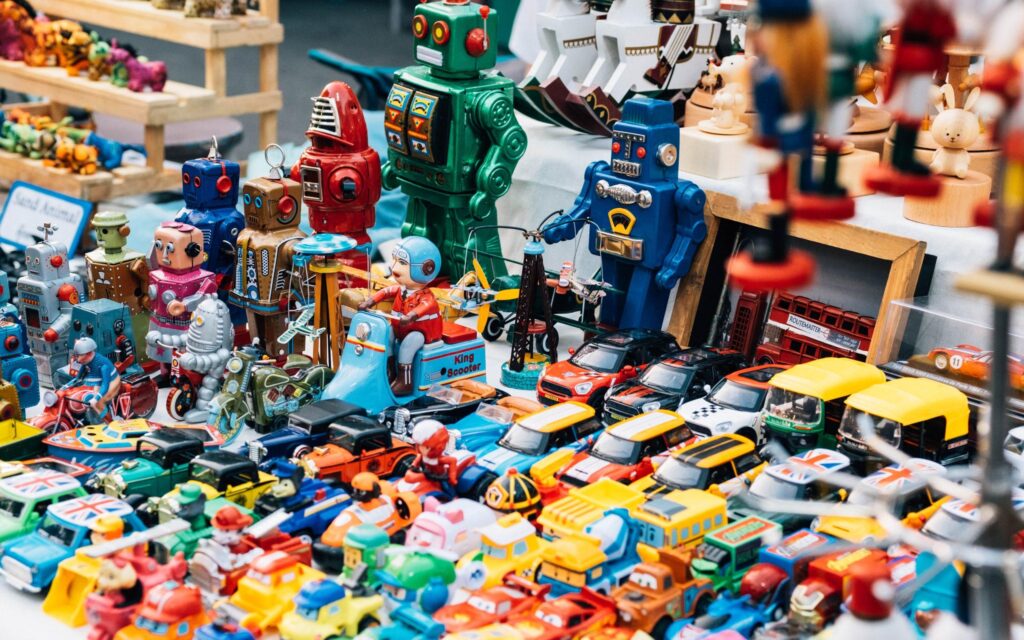Europe’s toy market is poised for steady growth over the next decade, with projections indicating a compound annual growth rate (CAGR) of 1.3% through 2035, according to the latest report from IndexBox. This forecast highlights a resilient sector adapting to evolving consumer preferences and technological advancements. As demand for innovative and interactive toys rises alongside sustainability trends, industry stakeholders are gearing up to capitalize on emerging opportunities in one of the world’s largest and most dynamic markets.
Europe’s Toy Market Poised for Steady Growth Driven by Innovative Product Launches
Continued innovation within Europe’s toy industry is catalyzing a transformative wave of product introductions that cater to diverse age groups and evolving consumer preferences. Companies are increasingly leveraging cutting-edge technologies such as augmented reality (AR), artificial intelligence (AI), and sustainable materials to captivate young audiences while addressing environmental concerns. This focus on innovation is not only driving consumer enthusiasm but also expanding market niches, from educational toys that foster STEM skills to interactive playsets enhanced with digital integration.
Key trends supporting market growth include:
- Eco-friendly and biodegradable toy options appealing to environmentally conscious families
- Smart toys that combine physical and digital play experiences
- Collaborations with popular media franchises to attract brand-loyal customers
- Customization tools enabling personalized toy designs
| Product Category | Projected CAGR (%) | Market Drivers |
|---|---|---|
| Educational Toys | 2.1 | Rising STEM awareness, digital learning integration |
| Electronic & Smart Toys | 1.8 | Wearable tech, AI-based interactivity |
| Eco-friendly Toys | 2.5 | Sustainability focus, regulatory support |
| Traditional & Creative Toys | 0.8 | Nostalgia, artisanal craftsmanship |
Key Consumer Trends Shaping Future Demand Across Major European Countries
Across Europe, an evolving consumer landscape is directly influencing toy market dynamics. Parents increasingly prioritize educational value and sustainability when selecting toys, driving demand for eco-friendly materials and STEM-focused products. Additionally, there is a growing preference for interactive and tech-integrated toys that blend physical play with digital experiences, catering to a generation raised in a digital-first environment. Countries like Germany and the UK lead the charge in adopting these trends, where market data reveal a sharp uptick in demand for smart toys and personalized playsets.
Moreover, demographic shifts and economic factors shape consumption patterns uniquely across major European nations:
- France: Rising birth rates and urban family lifestyles favor compact, multifunctional toys.
- Italy: Increased disposable income allows for premium, branded collectibles and niche hobby toys.
- Spain: E-commerce growth boosts accessibility to international toy brands and latest innovations.
| Country | Key Trend | Impact on Demand |
|---|---|---|
| Germany | STEM and tech toys | High growth in educational segments |
| UK | Interactive/digital play | Rise in smart toy sales by 15% |
| France | Compact multifunctional toys | Increased demand in urban centers |
Strategic Recommendations for Manufacturers to Capitalize on Emerging Market Opportunities
Manufacturers aiming to harness growth in Europe’s toy sector should prioritize innovation in sustainable materials and digital integration as pivotal drivers of consumer demand. With eco-consciousness rising across European markets, products emphasizing biodegradability and recyclability are poised to resonate with modern parents and environmentally savvy children alike. Simultaneously, blending physical toys with interactive digital platforms not only enhances play experiences but also fosters brand loyalty. Companies investing in smart toy technology and augmented reality features can unlock new revenue streams and differentiate themselves in a crowded marketplace.
Strategic positioning should also focus on expanding footprint within underpenetrated European regions where GDP growth and disposable incomes are forecasted to rise steadily. Manufacturers are encouraged to:
- Collaborate with local distributors to navigate regional consumer preferences and regulatory landscapes.
- Adopt agile supply chain models to quickly adapt to shifting demand and minimize production costs.
- Leverage data analytics for targeted marketing campaigns tailored to evolving customer segments.
Below is a snapshot of key strategic levers with potential impacts on market share and profitability in the next decade:
| Strategy | Potential Market Impact | Expected Timeline |
|---|---|---|
| Eco-friendly Product Lines | +15% Market Share Growth | 3-5 Years |
| Smart Toy Development | +20% Revenue Increase | 2-4 Years |
| Regional Market Expansion | +10% Sales Uplift | 1-3 Years |
In Summary
As the European toy market is projected to grow steadily at a 1.3% CAGR through 2035, industry stakeholders are poised to navigate both emerging opportunities and persistent challenges in this evolving landscape. With consumer preferences shifting and technological innovations reshaping product offerings, manufacturers and retailers alike will need to adapt strategically to maintain momentum. The insights provided by IndexBox underscore the importance of informed decision-making as the market charts a course toward sustained, if moderate, expansion in the years ahead.
